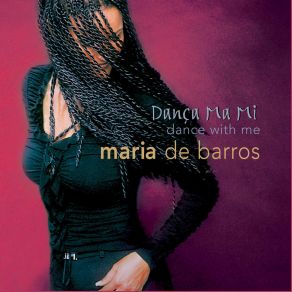Dança Ma Mi (Dance With Me) / Danca Ma Mi (Dance With Me)
Download links and information about Dança Ma Mi (Dance With Me) / Danca Ma Mi (Dance With Me) by Maria De Barros. This album was released in 2005 and it belongs to World Music, Latin genres. It contains 12 tracks with total duration of 47:28 minutes.

|
|
|---|---|
| Artist: | Maria De Barros |
| Release date: | 2005 |
| Genre: | World Music, Latin |
| Tracks: | 12 |
| Duration: | 47:28 |
| Buy it NOW at: | |
| Buy on iTunes $9.99 | |
| Buy on Amazon $9.49 | |
Tracks
[Edit]| No. | Title | Length |
|---|---|---|
| 1. | Amor Luz | 4:14 |
| 2. | Oh Menel | 3:43 |
| 3. | Bo Ke Nha Boy | 3:51 |
| 4. | Espaco Infinito | 4:21 |
| 5. | El Tambem J'dame | 3:27 |
| 6. | Caresse Moin | 4:09 |
| 7. | Pazinho Laxa | 4:06 |
| 8. | Um Tem um Amor | 3:59 |
| 9. | Nos Tradicon | 3:23 |
| 10. | Rosinha | 4:54 |
| 11. | Sol di Manha | 4:40 |
| 12. | Oumai | 2:41 |
Details
[Edit]The seductive, ultra-romantic, gracefully exotic follow-up to Maria de Barros' stunning debut, Nha Mundo (My World), does exactly what the English translation of the title promises — it invites listeners to dance, slowly then quickly then slowly again, to the various rhythmic energies of her native West African homeland. Her record label bills de Barros as a "Cabo Verdean chanteuse," largely as a matter of identifying her ancestry and musical palette, but the singer hails from nearby Senegal, for those interested in musical geography. The Cape Verdean islands are decidedly more colorful, situated as they are at a location where the cultures of three continents intermingle and fashioning native styles from a swirl of African, Argentinean, Portuguese, and Cuban rhythms. The land's most renowned legend is Césaria Évora, the five-time Grammy-winning "barefoot diva" who just happens to be de Barros' godmother and number one influence. But the younger singer isn't a complete disciple, as Évora is known for her melancholy mornas and de Barros — whose raspy, emotional voice bears a favorable comparison to that of Gloria Estefan — is being touted as "Queen of the Coladeiras," a salsa-styled dance music. Danca Ma Mi is a bright and sexy, soul-sparking romantic party collection, centered around de Barros' colorful interaction with adult and children's choirs and dazzling, alternately thick and sparse percussion textures. It plays like a travelogue of the heart for those who will never visit these islands, from mornas to coladeiras to merengue-like funana rhythms. Even if the listener can't distinguish which rhythm is which, it's still a vibrant musical experience. And since she's singing in her native language, English-speaking fans will enjoy the challenge of feeling de Barros' wide array of sorrows and joys sans the benefit of lyrical translation.